
Starting a Persian Carpet Collection
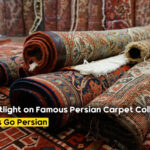
Spotlight on Famous Persian Carpet Collectors
Iran’s carpet markets offer a vibrant gateway into the country’s rich culture and tradition of craftsmanship. Visiting these bustling bazaars is a must for anyone interested in the world of Persian carpets, where you’ll encounter everything from intricate antique pieces to contemporary designs. This guide provides an overview of Iran’s most famous carpet markets, tips for making purchases, and advice on navigating the lively market scenes to get the most out of your experience.

Exploring Iran’s Carpet Markets
Why Visit Iran’s Carpet Markets?
Persian carpets are renowned for their beauty, durability, and craftsmanship, making them some of the most sought-after carpets in the world. These markets provide a unique opportunity to see authentic Persian carpets up close, learn about the variety of regional styles, and connect directly with artisans and traders who are passionate about their craft. Here are a few reasons why visiting a carpet market is an unforgettable experience:
- History and Heritage: Persian carpet-making has a legacy spanning centuries, with each region’s carpets bearing unique designs that reflect its cultural identity.
- Artistry and Craftsmanship: Each Persian carpet is a masterpiece that represents months of meticulous work. In the markets, you can appreciate the intricate designs, colors, and textures firsthand.
- Opportunity to Buy Authentic Pieces: Iran’s carpet markets are filled with authentic Persian carpets, often at prices far more affordable than in international markets.
Top Carpet Markets in Iran
1. Tehran Grand Bazaar
Located in the heart of Iran’s capital, the Tehran Grand Bazaar is one of the country’s largest and most famous markets. Here, the carpet section is filled with vendors selling everything from antique pieces to newly crafted carpets in a variety of styles, sizes, and colors.
- Highlights: The bazaar is known for its variety and bustling atmosphere, offering both high-end carpets and more affordable options. You’ll also find carpets from different regions across Iran, making it a great spot to compare styles.
- Tip: Many vendors in the Grand Bazaar speak some English and are accustomed to international visitors, making it easier to communicate and negotiate.
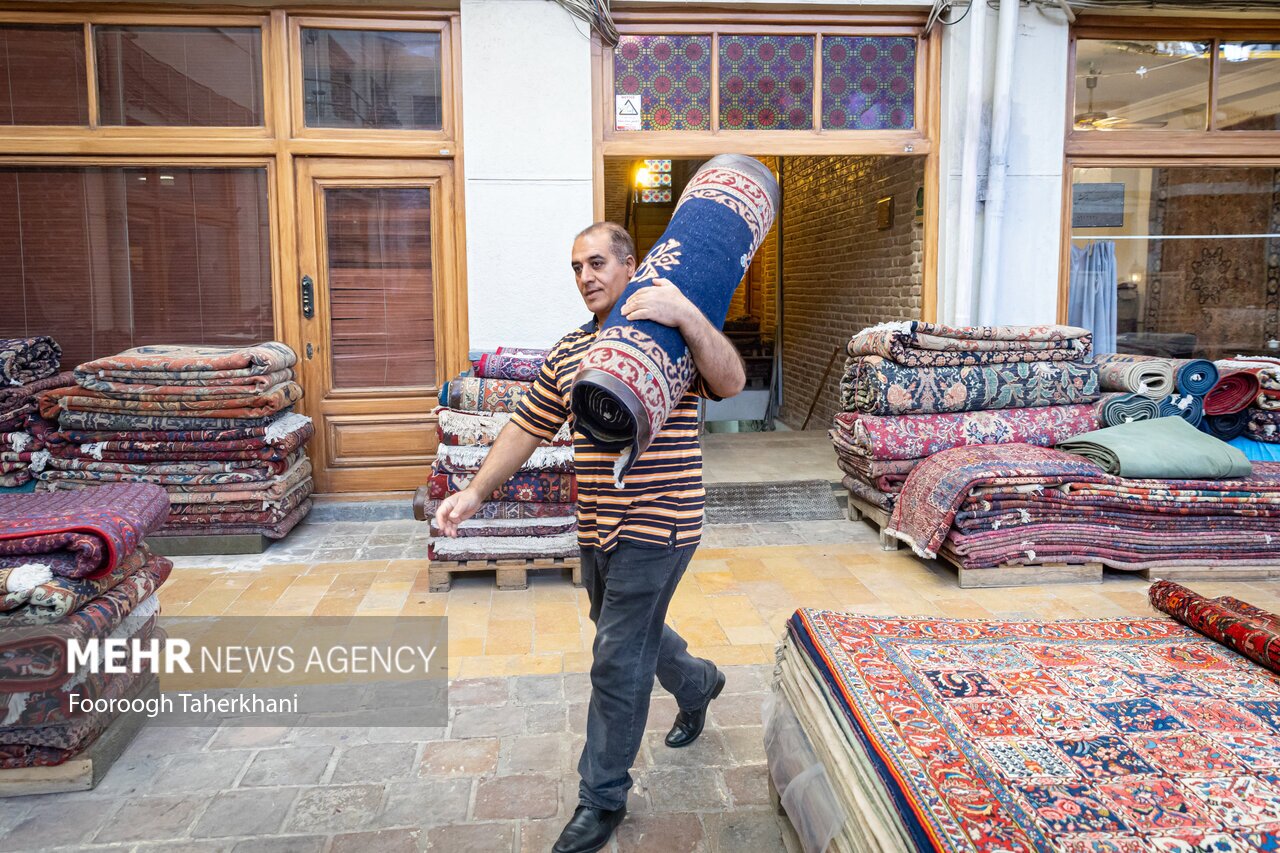
Tehran Grand Bazaar
2. Kashan Bazaar
Kashan is famous for producing some of Iran’s finest carpets, and the Kashan Bazaar is an essential stop for any carpet enthusiast. Kashan carpets are known for their deep reds, intricate medallion patterns, and high knot density.
- Highlights: Visiting the Kashan Bazaar allows you to see carpets crafted with some of the best wool and silk in Iran, often dyed with natural colors. The carpets here are detailed, luxurious, and typically made with a blend of traditional and modern designs.
- Tip: The artisans here often come from family businesses that have crafted carpets for generations. Don’t hesitate to ask vendors about the history and methods behind each carpet.
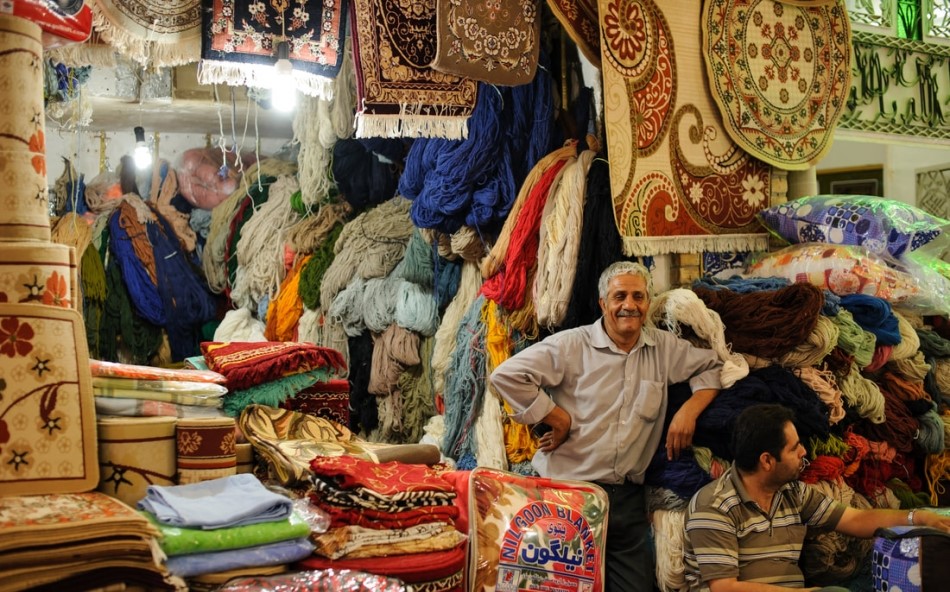
Kashan Bazaar
3. Isfahan Bazaar
Located near the iconic Naqsh-e Jahan Square, the Isfahan Bazaar is a stunning market known for its exquisite Isfahan carpets. This historic bazaar is an architectural marvel, filled with carpet shops displaying hand-woven masterpieces.
- Highlights: Isfahan carpets are distinguished by their symmetrical designs and vibrant colors, often with intricate floral and animal motifs. These carpets are usually woven with high-quality silk, adding a touch of luxury.
- Tip: Prices here tend to be higher, but Isfahan carpets are considered investment pieces. Vendors are used to international clients, and you may find English-speaking guides who can help explain the history and craftsmanship behind each piece.
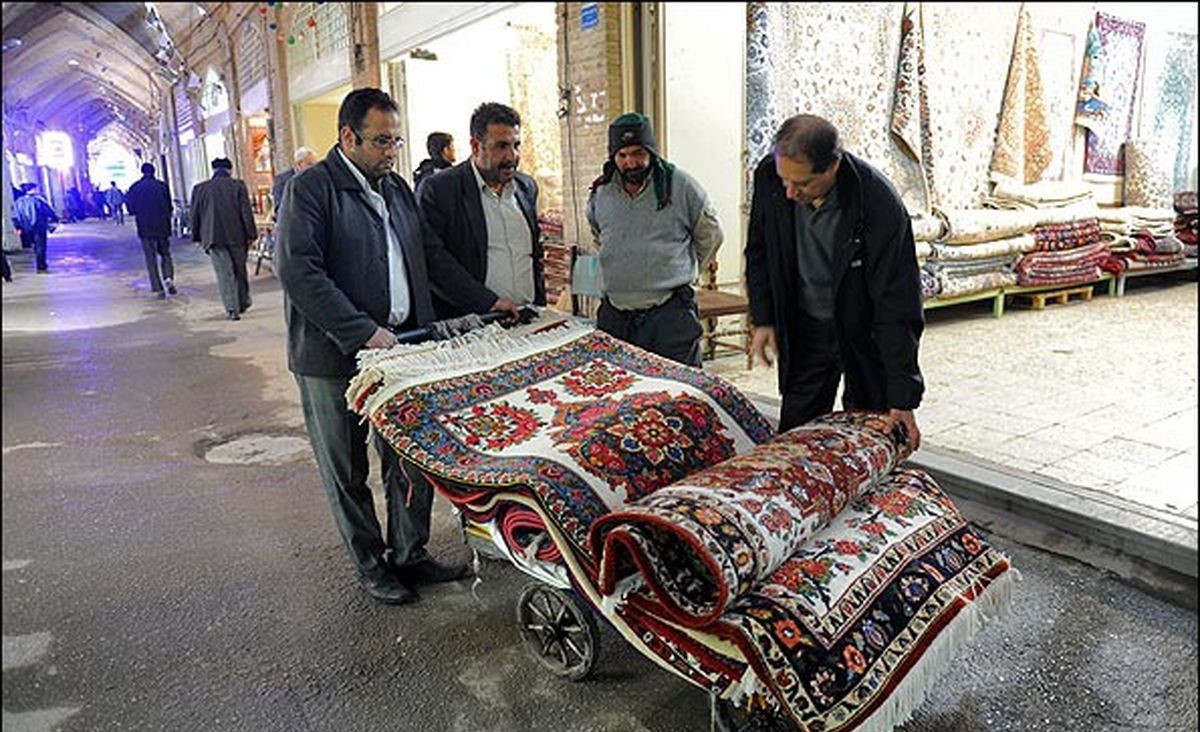
Isfahan Bazaar
4. Tabriz Bazaar
The Tabriz Bazaar is one of the oldest and largest covered bazaars in the world, with a section devoted to Persian carpets that attract collectors worldwide. Tabriz carpets are highly sought after, known for their fine knotting and detailed designs.
- Highlights: Tabriz carpets often feature detailed medallions, geometric patterns, and natural scenes. The craftsmanship here is particularly high, with many vendors showcasing carpets made with silk and high-quality wool.
- Tip: Bargaining is common, but respect for the craft is expected. Ask the vendors about the knot count and design origin to help determine the quality and value of the carpet.
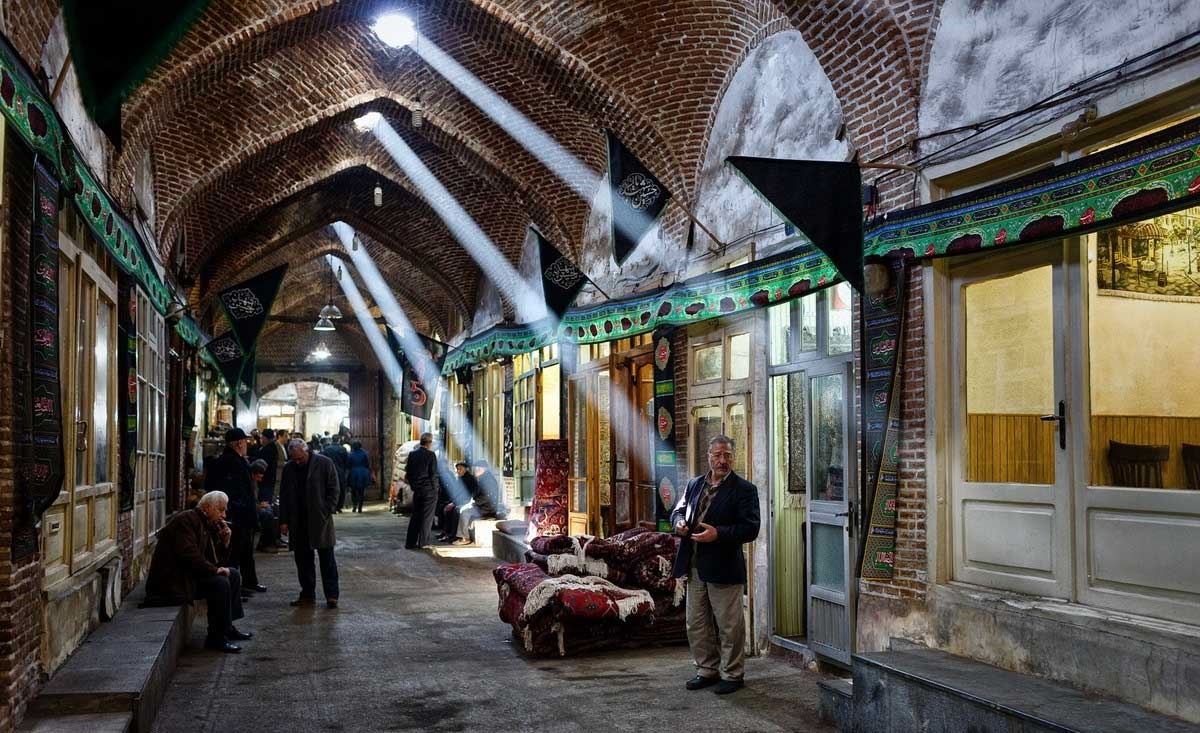
Tabriz Bazaar
5. Shiraz Bazaar
Shiraz is known for its tribal carpets, with designs reflecting the culture of the local Qashqai people. The Shiraz Bazaar offers a wide selection of these unique, handmade carpets with bold colors and geometric patterns.
- Highlights: Unlike the finely detailed carpets of Tabriz or Isfahan, Shiraz carpets have a more rustic, tribal aesthetic. They’re usually made from wool and feature lively colors, often using natural dyes.
- Tip: Shiraz carpets are typically more affordable, making them a great option for first-time collectors looking for authentic Persian carpets with a unique style.
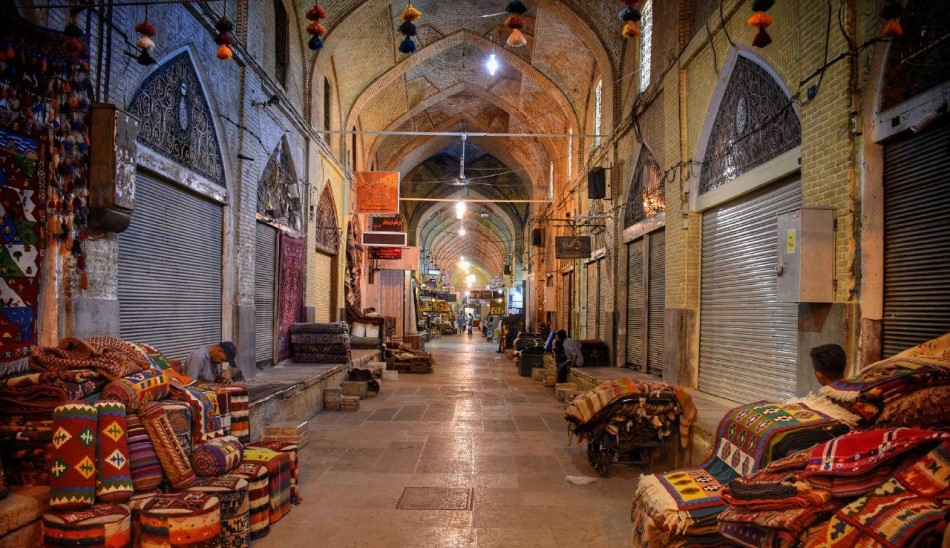
Shiraz Bazaar
Tips for Buying a Persian Carpet in Iran
1. Know the Basics
Before heading to the market, familiarize yourself with different carpet styles and characteristics. Knowing the differences between Kashan, Isfahan, and Tabriz carpets, for example, will help you make an informed choice and determine the approximate value of each type.
2. Check the Knot Density
Higher knot density is an indicator of quality in Persian carpets. To check knot density, you can look at the back of the carpet and count the knots per square inch. Finer carpets with more intricate designs tend to have a higher knot density, resulting in a softer texture and a more detailed pattern.
3. Inspect the Material
Most Persian carpets are made from wool, silk, or a blend of both. Silk carpets are softer, shinier, and generally more expensive, while wool carpets are durable and resilient. In some regions, wool is blended with silk to enhance the durability and texture.
4. Negotiate Respectfully
Bargaining is a common practice in Iran’s carpet markets, but it should be done respectfully. Begin by asking the vendor for their best price, then counter with a lower offer. A respectful approach usually results in a more pleasant buying experience, and vendors are more likely to offer you a fair price.
5. Ask for a Certificate of Authenticity
For high-quality or antique carpets, ask the vendor if they can provide a certificate of authenticity. This document verifies the carpet’s origin, materials, and craftsmanship, which can be useful if you plan to insure or eventually sell the carpet.
6. Consider Shipping Options
Many markets offer international shipping for large purchases, so if you’re buying a substantial piece, ask the vendor about their shipping services. This can be a more practical and affordable option than trying to transport the carpet yourself.
What to Expect When Visiting a Carpet Market
Iran’s carpet markets are lively, welcoming spaces where vendors are happy to share their knowledge and passion for carpets with visitors. Here’s what you can expect:
- A Welcoming Atmosphere: Many vendors are eager to educate you about their carpets, often offering tea while they show you different pieces and explain each one’s unique qualities.
- A Range of Styles and Prices: Persian carpets come in a wide range of prices, from affordable pieces to high-end investments. Don’t hesitate to explore different options and ask questions to understand the value of each carpet.
- Rich Cultural Exchange: The markets are full of stories—about the carpets, the artisans, and the history behind each piece. Vendors often share stories about the region or family traditions tied to their carpets, adding depth to your purchase.
Bringing Home a Piece of Iran
Buying a Persian carpet is more than just a purchase; it’s a connection to a centuries-old craft and a piece of Iran’s rich cultural heritage. Once you’ve selected your carpet, it will serve as a beautiful reminder of your travels, bringing the warmth, history, and beauty of Iran into your home. Whether you choose a luxurious silk Tabriz carpet or a rustic Qashqai piece, each carpet tells a story, adding an element of art and history to your living space.
Iran’s carpet markets provide a chance to explore not only the artistry of Persian carpets but also the vibrant energy of the bazaars themselves. Through these markets, you’ll gain a deeper appreciation for the legacy, skill, and passion that define Persian carpet weaving—a cultural treasure that has stood the test of time.



















